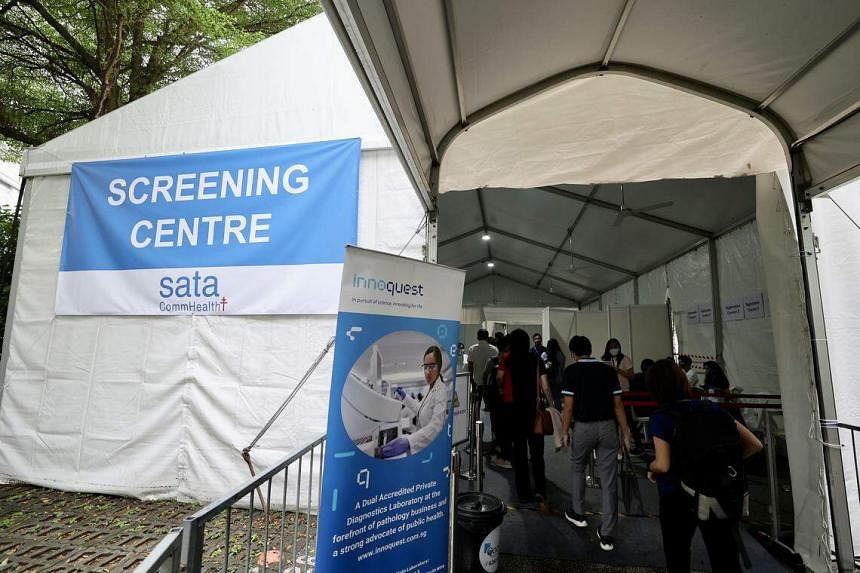SINGAPORE – Guidelines for the treatment of tuberculosis (TB) in Singapore have been updated, following the development of newer and better ways of diagnosing and treating the disease in recent years.
Among the changes is to have more patients who are on directly observed therapy (DOT) be supervised through live video instead of in person.
In the update published online in the Academy of Medicine’s journal, Annals, on March 19, the 21-member guideline development team said there have been major new advances since the guidelines were first published in 2016.
These include new drug regimens that can reduce the treatment time for patients from six to nine months now to four months, the use of artificial intelligence to aid radiological screening and next-generation genetic sequencing for drug susceptibility.
Commissioned by the Ministry of Health’s (MOH) National Tuberculosis Programme, the guidelines are to standardise and improve the clinical management of TB infection and disease in Singapore, said the team.
The update also recommends the use of video-observed treatment (VOT) in lieu of direct observation.
Patients with infectious TB, who make up the bulk of TB cases, are currently required by law to go personally to a polyclinic or the TB Control Unit at Tan Tock Seng Hospital to take their medications in front of a healthcare worker. This supervision is compulsory, whether daily or three times a week, for the entire six- to nine-month duration of the treatment.
The strict regimen is to ensure that patients do not stop their treatment before it is completed. Under the Infectious Diseases Act, patients who refuse to undergo DOT can be fined up to $10,000, jailed for up to a year, or both.
VOT was introduced some years ago, but did not gain traction.
Noting that DOT is a central tenet in TB control in Singapore, the new guidelines stated: “While all international TB guidelines support DOT under varied situations, several guidelines also emphasise the importance of balancing individual rights with public health objectives.”
It said VOT has emerged as a “cost-effective and patient autonomy-enabling alternative to DOT” in many guidelines, including those for Malaysia, Canada, New Zealand and the United Kingdom.
Patients are no longer infectious within days of starting TB treatment, but those who fail to complete their treatment can become infectious and spread the airborne bacteria.
Professor Hsu Li Yang, an infectious diseases expert at the NUS Saw Swee Hock School of Public Health, who was involved in the updated guidelines, said: “The updated TB guidelines incorporate the latest advances in the management of TB infection and disease, with the aim of being more patient-centred while at the same time supporting the goal of TB elimination in Singapore.”
TB is a bacterial infection that usually attacks the lungs, though it can affect any part of the body, such as the brain, lymph nodes or bones. The bacteria are spread through the air when a person with the disease coughs, speaks or sings. Not everyone who is infected gets the disease, as the bacteria can remain latent for a lifetime without causing disease.
Although TB is declining in Singapore, it remains endemic, with 1,138 people diagnosed in 2023 – down from a high of 1,617 cases in 2016. Another 220 people were diagnosed with TB in the first 11 weeks of 2024.
Welcoming the updated guidelines, Professor Paul Tambyah, president of the International Society for Infectious Diseases and senior consultant at the National University Hospital, said they were timely.
He noted that one major change was the advocacy for whole genome screening for all TB cases, which the guideline team said could be used for national surveillance of the disease, in addition to screening for drug resistance.
In January, MOH held a massive screening exercise involving more than 2,500 people in the Bukit Merah area after a genetic analysis of cases found that 17 emerging in that area in 2022 and 2023 had a similar genetic make-up. This suggested the disease had spread.

The exercise found two more people with the disease, and another 66 who needed to undergo further evaluation. In addition, 322 others were diagnosed with latent TB. Latent TB can be treated to kill the bacteria and prevent future occurrence of the disease.
The updated clinical guidelines were released just days before World TB Day on March 24.
Regarding computer-aided detection-artificial intelligence products for radiological screening, the guideline team said a certified radiologist would still be needed to provide a final read, but that developments in this rapidly evolving field should be watched closely.


